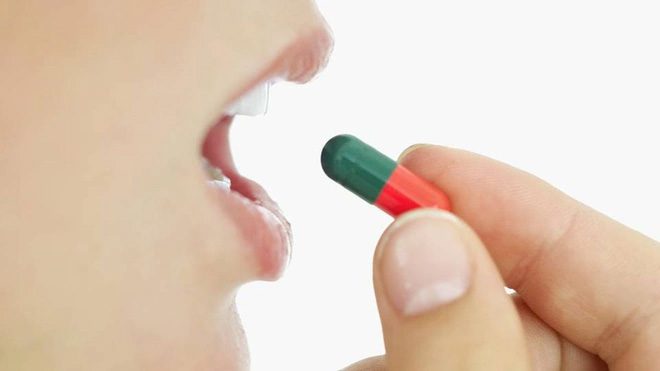A recent study indicates that lying on your right side is the best position for taking medication, as it allows the drug to reach the deepest part of the stomach.
When taking medication, we often consider various factors that could affect its effectiveness—such as whether to take it with or without food, during meals, or at specific times of the day.
But have you ever thought about how your body position might impact the medication you take? Do you usually lie in bed, sit at the breakfast table, or stand at the coffee counter while taking your medicine?
Researchers at Johns Hopkins University found that body posture and position can significantly influence the rate of drug absorption, according to Verywell Health.
“If you are standing upright or lying and tilted to the right, the pill will fall very close to the lower region of the stomach. As a result, it dissolves fairly quickly. However, if you lie down and tilt your body to the left, that is the worst position for dissolving the pill quickly,” said Dr. Rajat Mittal, a professor at Johns Hopkins University and the lead researcher.

Body posture and position can significantly influence the rate of drug absorption. (Photo: The Globe and Mail).
To conduct the study, Dr. Mittal and his team used a model based on the actual structure and anatomy of the stomach. Through physical and biomechanical mechanisms, the model can mimic the internal processes of the human stomach as it digests food or medication. The research team tested four different body postures for taking medication—standing or sitting upright, lying on the back, lying tilted to the right, and lying tilted to the left.
The simulation results showed that lying on the right side is the best posture for taking medication, as it allows the drug to move into the deepest part of the stomach. There, the drug dissolves twice as fast compared to when we take it while sitting upright.
On the other hand, lying on the left side or sitting tilted to the left is the worst position, as the time for drug absorption can be five times longer compared to taking medication while standing or sitting upright.
According to Mittal, posture significantly affects how a pill dissolves because the stomach is asymmetrical. It curves from the left to the right side of the body (similar to a kidney bean). A pill is also slightly heavier than the contents in the stomach.
Jason Gallagher, a professor of Clinical Medicine at Temple University School of Pharmacy (USA), stated that most pills only begin to work when the stomach pushes the contents of the capsule into the intestine.
Gallagher noted that if the pill is very close to the lowest part (i.e., the exit) of the stomach, it will dissolve and penetrate into the beginning of the small intestine more quickly.
“Inside the stomach, medication is often diluted into liquid and then continues to move through the digestive tract. Most drugs are absorbed in the small intestine. The time they spend in different parts of the digestive system can affect their absorption levels,” he said.
The research team from Johns Hopkins University published their findings in the journal Physics of Fluids.


















































